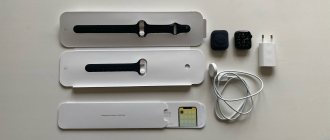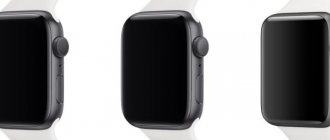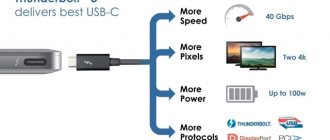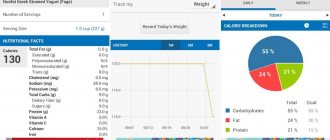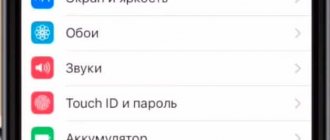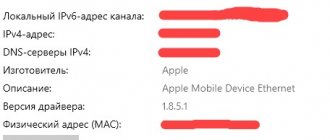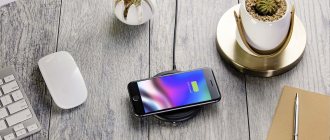Those discussing the iPhone XR vs XS have come to the right place. Yes, even though Apple has pulled the iPhone XS and iPhone XS Max from shelves, older iPhones are still being sold elsewhere and are the target of many people looking for a more affordable iPhone.
The iPhone XR is the only iPhone Apple launched in 2018 that still has heads turning, and you can see how it stacks up against other previous-generation iPhones below.
Main! Is the device good?
Of course yes. With one caveat. In the main review I said that this is not a smartphone for everyone. He made an analogy with cars, comparing the device with the BMW X6. Is this a good car? Certainly. Is it worth taking it? You need to look at finances. Everything is the same with XS Max.
A smartphone is not for everyone, primarily because of the price. Almost a year later, and even more so after the upcoming update of the line hits the market, we should expect a reduction in the price tag. Therefore, interest in the iPhone XS Max will definitely not decrease. The smartphone is not outdated one bit, it is still relevant and will definitely remain so for another couple of years.
However, are there any nuances that emerged after several months of use that the future owner of the Ten-ES-Max needs to be prepared for? Of course yes. As it turned out, there are quite a few of them. Some of them are interesting, from the category of features. Others are depressing. The iPhone XS Max proves by its example that the ideal smartphone does not exist. Even for a lot of money. So, pour some coffee/tea, we’ll figure it out.
Is the iPhone buggy?
I have no idea how any iPhone 8 Plus or X is doing two years after its release. I haven’t used these devices for a long time, I don’t know. I can only confidently speak for the iPhone XS Max. And it's buggy.
Accelerometer
The most annoying thing is the rotation of the screen, or rather, the rare but accurate mistakes in operation. Sometimes the smartphone refuses to rotate the screen to landscape or portrait orientation. To a greater extent, this applies to third-party software, such as the YouTube and Telegram applications. The latter is one continuous set of glitches. In stock applications and the browser, no problems with rotation were noticed, so Apple developers, by and large, have nothing to do with it. And yet, there is a glitch.
Application crashes
But here it’s worth blaming the system itself, because not only third-party applications crash, but native ones. Notes, Safari, camera - all these utilities are rare, but they can still suddenly stop working and throw you to the main screen. This happened especially often in early versions of iOS 12. A few months after its release, everything was finished, and the joints disappeared.
Keyboard, hello!
There is no one to blame here either, except the native developers. From time to time, the keyboard either does not want to come out from the bottom edge of the screen, or vice versa - it does not want to hide. In the latter cases, it can even hang on top of the Home screen and application icons, which looks especially creepy. During the year of use, this glitch was repeated no more than 10 times, so it’s tolerable. Each time it was treated by rebooting the device, which is a very tough procedure for an iOS device. However, iPhones do not need to be rebooted. Usually.
Insta on iPhone works extremely poorly. The feed is updated out of order, the dialogues in the direct message are confused with each other, the fonts overlap each other here and there. Well, and most importantly, the connection periodically disappears. Until you turn Wi-Fi off/on. Until this moment, the application simply does not understand that the Internet is available and is working normally.
Of course, this has nothing to do with Apple itself. We should blame the slanted developers of the application itself. However, it’s not surprising if you remember what other “glitch-free” applications are serviced by the same developers: WhatsApp and Facebook.
Fierce crime
During the entire period of use, particularly severe glitches occurred at most three times. The first one is the most funny, because the bug overtook me at the exit from the Vvedensky Convent (Ivanovo). The smartphone seemed to be in a coma. The main screen turned on, but there was no clock, no unlock icon - none of that was there. Only wallpaper and absolute indifference to my touches. It's funny that this happened after visiting a Christian church. This is the Shaitan box.
Later, the glitch was repeated a couple more times, but under more ordinary circumstances. However, in each case, I did absolutely nothing with the device. I just took my smartphone out of my pocket and saw this horror on the locked screen.
By the way, with the release of iOS 13 the nightmare stopped.
Design
It was foolish to expect any drastic changes in the appearance of the device. And despite the addition of a third new color, externally the X and XS are simply twin brothers, which is very much in the spirit of the Apple company.
Last year was remembered by Apple fans for the absence of a large device in an updated format, and this time a miracle happened. Externally, the XS Max is a pure top ten, only bigger.
The device fits into the dimensions of the iPhone 8 Plus and has a 6.5-inch screen! For a second, the difference is exactly an inch. And compared to the standard model, this solution looks more “broad”.
By the way, the cutout is less noticeable, and the frames are not so noticeable. Otherwise, the company is true to itself and you won’t find any exceptional design solutions here. Steel frame, glass front and back. Dual camera, no 3.5 mm mini-jack and one Lightning.
Kotska, scratches - what happened to the smartphone after a year?
The oleophobic coating of the display was the first to suffer. It wore off after about 3-4 months of use. I didn’t use any protective films, which obviously sped up this process.
I expected the mirror-polished steel side to suffer the most. However, as it turned out, there were at most 5-6 tiny scratches on it. I would like to make a note that I handle devices carefully: I don’t throw or drop them. In 10 months of use, the XS Max has never fallen, so I can’t say anything about damage after encountering asphalt or tiles. However, I often place devices on relatively rough surfaces: a dirty table, floor, tile or something similar.
On the back the situation is repeated: there are several small scratches, which have practically no effect on the appearance of the device. But the display suffered the most, although I always place the device with the screen facing up. A small network of scratches is visible on it at an angle. True, all of them are not deep, and therefore do not interfere with the perception of content.
Leather Case
For the first six months I used the smartphone in a blue leather case - official, everything as it should be. Unfortunately, this is one of the most unreliable accessories from Apple.
Was
The leather is destroyed almost instantly, the original shade disappears, and the corners of the case are harshly wiped off. Thus, for the proper appearance, you will have to update your leather accessory once every 3 months, or maybe more often. Of course, this is not a cheap enterprise.
It became
Apple iPhone Xs Max 256GB
Vitaly, 02/07/2019
Cons: Slippery
After using the iPhone 6s Plus for three years, there are no problems with the dimensions. The hated bangs don't seem noticeable on the big screen. Moving from an old device to a new one was a bit of an adventure: despite the fact that the Apple Watch moved perfectly on its own, for some reason not all of the watch usage statistics were transferred. I tried several times and the situation was always the same. I had to restore from an encrypted iTunes backup.
Pros: Face ID works quickly and quite accurately, there are no problems. At the beginning it seemed that it would be inconvenient to use Apple Pay, but all my arguments and doubts dissolved after I tried it. On the one hand, it has become even more convenient, because... You can pay without taking off your gloves. If you lie on your right or left side holding the phone in your hand, Face ID also works without problems, unless, of course, the pillow or blanket does not cover your face too much. In my usage scenario, the battery charge lasts for two days, about the same thing happened with the new iPhone 6s Plus in 2020. The charging speed is not fast, but not slow either. I didn’t measure it specifically, but it feels similar to the iPhone 6s Plus. I charge with a proprietary USB-C to Lightning cable (MK0X2ZM/A) from iMac. This cable model has already been discontinued, so the situation with others may be different. Here 3D Touch works great, if on the old phone it was sometimes stupid, here it is 100% as it should. Just perfect. I'm not a fan of playing music on my phone, but I respect the way it rings and the way the music plays. In comparison, again, it’s just heaven and earth. The Apple TV remote control built into iOS always connects the first time, instantly. The same cannot be said about the iPhone 6s Plus, for example. Apparently the “magic” of the bluetooth version 5, which is in this iPhone and Apple TV 4k, is making itself felt. There was a lot of talk on the Internet about changing modems from Qualcomm to Intel, and as if the quality of mobile network reception on these phones was worse. Subjectively, here I more often see 2 divisions, and before I more often saw 3. Perhaps this opinion has developed over 15 days because now I pay more attention to it. In any case, there were no problems with communication. On the other hand, as a user, it doesn’t matter to me at all whether it’s 2 bars or 4, what’s important to me is that there is a connection at a particular moment in time, and if the reception is “uncertain,” then this uncertainty doesn’t drain the battery to zero in a couple of hours. Thanks to the new hardware, Siri works instantly. No sooner said than done, without pauses to process the first request. Not to say that a pause of 1-3 seconds is too critical, but it’s more pleasant when there is none. Portrait mode here is noticeably better than on the iPhone 7 Plus.
Cons: The screen or rear glass crunches, I still don’t understand, but my case is not the only one. The cap inside me says: If there is a crunch, then there is play, and if there is play, then the components of the device do not fit tightly together, so there is no point in even talking about IP68, much less checking. I can’t say whether it’s a defect or not, but it makes it clear about the quality of the build and it doesn’t matter at all that these are the first batches. I remember last year, at the start of iPhone X sales, there were cases when the device was replaced several times because of this crunching sound. Those who thought the iPhone 6 was slippery in 2014 could not even imagine what would happen next. If you have naturally dry skin on your hands, you will have to buy a cover, even if you are against covers. I haven’t held the iPhone 8 or iPhone X in my hands, but in my case this one is just like a bar of wet soap. If you place this phone with the screen facing up on a smooth surface that has a slight slope, you can be sure that it will roll down within 5-10 minutes. I checked it specifically: Nokia N8, Lenovо S60, iPhone 6, iPhone 6s Plus do not roll, this one does. The problem most likely lies in the protruding chamber, because of this the contact with the surface is insufficient, and this is how we get a “fugitive”. It is unpleasant that you have to remember such features. Some may not like that the device is heavy, but as the “classic” said: weight is good, weight is reliable...
Face ID
Now about the good things, what makes you happy and what you instantly get used to.
Face ID is an exceptionally convenient unlocking method. Especially when your hands are full. In my case, this happens in the car. I sloppily touch the screen with my finger, it lights up, and a second later it notices my face and then unlocks. Very comfortably. The main thing is that it works from almost any angle (within reasonable limits) and in any lighting. Even in pitch darkness - only a fraction of a second slower than during the day.
It is also important that Face ID is reliable. Especially compared to some South Korean and Chinese competitors who remove their protection when they see the owner’s face in a video or high-quality photograph. There is only one way to hack an iPhone XS Max - with the help of its twin. Here Face ID is helpless, tested in practice.
3D Touch, don't go away. Please!
According to rumors, new smartphones from Apple will be deprived of the strong pressure recognition function - 3D Touch. This is sad because I use 3D Touch all the time. When you turn on the flashlight directly from the locked screen, for example. There is no need to touch and hold your finger for some time, even if not for a long time. Just press down firmly on the icon you are looking for and the flashlight will turn on immediately. Infinitely convenient. And fast.
Quickly moving the cursor through the text is an option that deserves a Nobel Prize. There is no need to aim your finger at a specific place between the symbols. Simply press down on the keyboard and, as if on a touchpad, move the cursor to the desired location for editing. Comfortable? Not that word!
I don't use 3D Touch in other places. The same call to the application context menu is clearly not my option.
Camera - point and shoot
On the one hand, this is cool. The quality of pictures on the iPhone XS Max is satisfactory. The dynamic range works perfectly, so you don’t have to worry about highlights or too dark areas in the pictures. Night photography is especially pleasing, when it is necessary to capture the entire palette of city lights at night. In this case, XS Max removes bright spots from flashlights, leaving almost the structure of the light bulb itself visible. It is this feature that distinguishes the XS from the top ten of 2017.
However, I will still complain. I really miss wide-angle photography. Sometimes it is not possible to move further away so that the building in front of you fits entirely into the frame. Almost all Android smartphones this year have acquired a third module, covered with wide-angle glass. Queue for Apple. Are looking forward to.
Well, if the topic turns to wishes, then it would be cool to implement not double optical zoom, but at least 5x. Out! Huawei has got it all right with its P30 Pro and it works exceptionally well. Even with stub and during video recording at 4K resolution. I would like the new iPhone to have a built-in telescope. That would be really cool!
⇡#Display and sound
The iPhone Xs Max has a 6.5-inch OLED display with a resolution of 2688 x 1242. As always, Apple avoids flat numbers, achieving its own goals - in this case, a pixel density called Super Retina - 458 ppi. The displays in the iPhone X c Xs have exactly the same density.
The display is straight, not curved like the OLED in the Samsung Galaxy of recent years, Sony Xperia XZ3 or Huawei Mate 20 Pro. Of course, the manufacturer claims that this is the “best in the world” OLED display - you can neither agree nor argue with this. Traditionally, Apple has done well with screens, but with the use of current technology, everything has become very good. The Xs Max screen, as befits any OLED, has a conditionally infinite contrast, supports Dolby Vision and HDR10 technologies. The picture looks great, especially if you activate the True Tone mode, which allows the smartphone to independently select color rendering depending on the external lighting - the mode also appeared in the iPhone in the last generation and has not disappeared in the Xs. It is activated by default, I recommend that you simply leave this setting alone. However, we tested the iPhone Xs Max screen both with and without True Tone.
It must be said that adaptive brightness for the iPhone Xs Max cannot be turned off - the smartphone will always adapt to external lighting, whether you want it or not. The brightness slider in the dark and in bright artificial light was at its maximum during our measurements, but in one case the colorimeter showed 258 cd/m2, and in the other – 521 cd/m2. There is a suspicion that in bright sunlight the smartphone will be able to “raise” the brightness even more. Be that as it may, using the iPhone Xs Max is comfortable in any lighting, without any adjustments or assumptions.
iPhone Xs Max, gamma. Yellow line – Xs Max indicators, dotted line – reference gamma
iPhone Xs Max, color temperature. Blue line – Xs Max indicators, dotted line – reference temperature
iPhone Xs Max, color gamut. Gray triangle – sRGB coverage, white triangle – Xs Max coverage
Apple has always been famous for its ability to customize the displays of its devices, from the iMac to the iPhone. Xs Max is no exception. The average gamma at default settings is 2.23, which is close to ideal. Notice how smooth the curves are, this is a rarity in the world of mobile device screens. The color temperature is slightly higher than normal - 6,700-6,800 K. The average deviation DeltaE for the extended Color Checker palette (shades of gray + a wide range of color shades) is 2.02, with a maximum permissible norm of 3 and a standard of 2.00. The color space matches the sRGB standard almost exactly. You'll see colors on iPhone the way content creators intended.
iPhone Xs Max, gamma with True Tone mode activated in the dark. Yellow line – Xs Max indicators, dotted line – reference gamma
iPhone Xs Max, color temperature with True Tone mode activated in the dark. Blue line – Xs Max indicators, dotted line – reference temperature
iPhone Xs Max, color gamut with True Tone mode activated in the dark. Gray triangle – sRGB coverage, white triangle – Xs Max coverage
In order to demonstrate the impact True Tone mode has on the picture, we present to your attention the measurement results with the automatic color adjustment mode activated, taking into account external conditions. In a dark room, the color temperature is greatly reduced, the brightness at the limit does not exceed 226 cd/m2, and the color space is shifted relative to the norm. The image on the screen is perceived very well. Bravo, Apple, with the transition to OLED space there is no longer even the slightest complaint - the iPhone has beautiful and perfectly tuned displays.
| iPhone Xs Max Display Settings | ||
The sound in the Xs Max is also ok. There are stereo speakers here. They are not directed towards the user, as in the Sony Xperia XZ3 - a standard speaker located on the bottom (right when gripping horizontally) works in tandem with the earpiece. But in terms of volume reserve and frequency range, it’s excellent. Moreover, it feels like there is progress compared to the iPhone X, which also had decent sound.
But with headphone output it’s not so simple. On the one hand, there is full support for high-resolution wireless audio transmission standards, and no one bothers you to purchase an adapter; on the other hand, a direct assessment of the quality of the iPhone Xs Max audio path is perhaps impossible.
Hardware and performance
A full comparison between iPhone and Android smartphones has always been impossible. Assessing the power and prospects of a platform “from a distance”, talking about open and closed operating systems and omitting completely different opportunities for optimizing hardware for software, is, alas, obviously futile. Therefore, all graphs obtained after tests in common benchmarks should be considered purely illustrative: the most interesting thing about them is not the difference between the iPhone and flagship Android smartphones, but the difference between last year and the latest iPhone - with the Apple A12 Bionic and A11 Bionic platform, respectively.
Apple traditionally does not disclose details of its hardware, simply reporting the number of cores (six), their names (two Vortex and six Tempest), technical process (7 nm - a world first, along with HiSilicon Kirin 980) and various percentages of performance gains and energy efficiency etc. Based on the results of tests conducted by colleagues from Anandtech, we can roughly calculate the clock speed at which the A12 Bionic cores operate: 2.5 GHz for Vortex and 1.6 GHz for Tempest. There is no noticeable increase in frequencies relative to the A11, but, apparently, there is a serious increase in cache volume - this applies to both “large” and “small” cores. The main changes concerned energy efficiency thanks to the use of the 7-nm process technology.
Even less is known about the graphics subsystem, as well as about the coprocessor for neural network computing, than about the main cores, but it is they that provide the increase necessary to maintain the status of perhaps the most powerful modern smartphone - in synthetic tests this is most noticeable in tests that actively using 3D graphics: 3DMark and GFXBench. Please note that in purely “processor-based” Webxprt there is not only no increase, there is even a slight drop compared to the iPhone X - this is, of course, a measurement error (here the old and new platforms should be approximately equal), but it is a good indication of priorities during the development of A12 Bionic.
At first glance, the RAM in the iPhone Xs Max is not much – 4 GB. And this is in the year when monsters with ten gigabytes of RAM are already appearing on the market! Everything is simple here - this is exactly what a smartphone with a display with a resolution of “near-Full HD” needs today. Based on many years of experience in using Apple smartphones, you can safely transfer the usual conclusion to the Xs/Xs Max - for two or three years you don’t have to worry about their performance, it’s enough for any needs.
The permanent memory in the iPhone Xs/Xs Max is set to 64, 256 or 512 GB. Very worthy, especially the last two options; I don’t want to whine about the lack of a microSD slot. Another thing is that you will have to pay in full for such amounts of memory.
Operation speed
I can’t say that the speed of work has somehow dropped over the year. No, the software flies, the animation is absolutely smooth - everything works as quickly as possible. For iOS, of course. However, some rolliness is still present. In terms of interface response, the iPhone XS Max is far from the fastest smartphone on the market. OnePlus 7 Pro, Huawei P30 Pro - these guys can navigate the system faster even by eye. True, I don’t feel any discomfort when periodically moving from one gadget to another. You quickly get used to the features of the iOS interface and it’s not annoying at all.
I’m sure nothing bad will happen in a year, or even two. What will happen next - time will tell, but the life cycle of "apple" is always very long. You already know about this.
But the fact that the smartphone has stopped storing a bunch of open tabs in Safari is a fact. Previously, Apple devices easily stored a lot of content in the background: up to 20 tabs in the browser, a bunch of applications, each of which was paused at the moment of hiding. Now this is not the case: tabs are reloaded when you switch to them, and applications in the background are launched again, from scratch. Of course, not all of them, but those that hang in the queue approximately starting from fifth place. The most current utilities are paused.
In short, the iPhone is severely short on RAM. Even 4 gigabytes in the iPhone XS Max is not enough, because iOS and the content have become too heavy.
Autonomy
If you use the device in the usual way, without forcing it in applications, then it quietly lives through the day. Two days are already out of the realm of fantasy. You can reach the milestone in one and a half days, but to do this you need to touch the “ten-es” as little as possible.
If you drive the device both in the tail and in the mane, then by the evening the smart will have to be charged again - the device will not survive until twelve. In this mode, I heavily use social networks, web surfing, a little camera, but, most importantly, I use navigation. The latter eats up the battery very quickly, so in the car I always charge the device from the standard USB slot. You never know.
Has the capacity dropped over the year of using the iPhone XS Max? Personally, I didn't notice. The “Battery” section indicates 96 percent battery health, so you can live. Moreover, very happily ever after.
The camera is the main advantage of the iPhone 11 Pro Max
This is the main advantage of the 11 Pro Max over the XS Max. The current version of the top iPhone has a triple number (previously it was double). Both smartphones produce high-quality footage, but the 11 Pro Max plays in a completely different league. It copes well with difficult night photography, while the XS Max lacks night mode. And the software wizard Deep Fusion will make sure that the photos turn out to be even better.
The camera has become objectively better. And this is the main and only truly compelling argument in favor of replacing the XS Max.
ps: However, the “budget” basic iPhone 11 costs almost half as much and takes pictures almost as well...
Bottom line
The iPhone XS Max is a great smartphone. And after the September presentation, Apple will drop slightly in price and become an even more desirable acquisition.
I like everything about the device, plus or minus - it’s very comfortable to use the device. The only thing that's really missing is the camera capabilities. A 2x optical zoom is clearly not enough in 2019. In addition, all competitors have acquired an additional camera for wide-angle shooting, and this is a very useful option when traveling. Against this background, the XS Max, on the one hand, looks pale. On the other hand, we recently lived without all these three, four and five cameras. And we felt great.
Apple iPhone iPhone XS iPhone XS Max
Display - is there a noticeable difference?
Both have high-quality OLED screens. But the contrast ratio of the 11 Pro Max is twice as high - 2,000,000:1 versus 1,000,000:1 for the XS Max. The brightness has also increased - from 625 to 800 cd/m2 (in HDR format, and even 1200 cd/m2). Such are the wonders of the new Super Retina XDR.
Is this noticeable in real life? If you don't put iPhones next to each other, then no. But, if you put the two phones side by side, everything falls into place - the 11 Pro Max has a noticeably brighter image. What's the advantage? In viewing content on a sunny day, for example.
Conclusion - yes, the display on the 11 Pro Max is indeed better. But because of the brighter screen, we wouldn't be in a rush to replace the XS Max, as it also has a stunning display. In addition, with support for 3D Touch, which the new product lacks. What is the advantage of 3D Touch over the simple Haptic Touch, we told you in a separate article.


